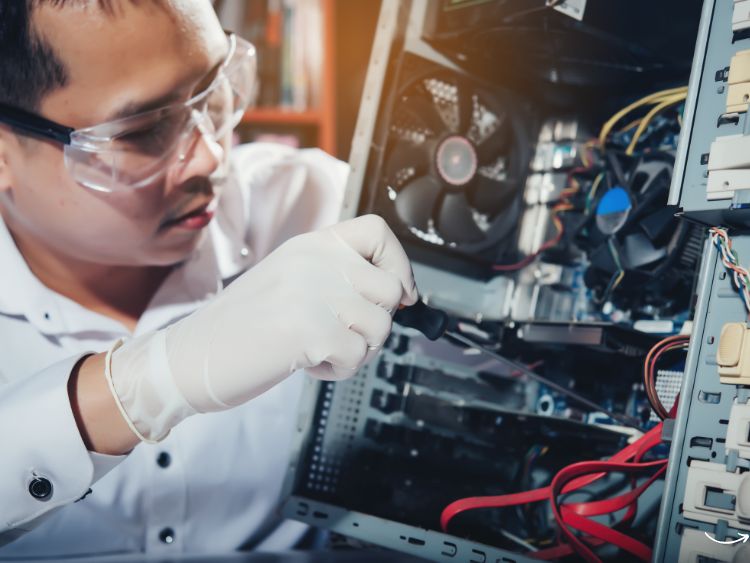Ever wondered what keeps your computer running smoothly day in and day out? It’s not just about having the latest processor or the most advanced graphics card. One of the unsung heroes in maintaining your computer’s health and performance is computer hardware monitoring. This practice involves keeping an eye on your computer’s hardware components, ensuring they function correctly and efficiently. Let’s dive into the world of computer hardware monitoring and uncover why it’s essential, how it works, and the tools you need to get started.
What is Computer Hardware Monitoring?
Computer hardware monitoring is the process of tracking and analyzing the performance and status of your computer’s physical components. This includes the CPU, GPU, RAM, hard drives, power supply, and more. By monitoring these components, you can detect issues early, optimize performance, and extend the lifespan of your hardware.
Key Components to Monitor
- CPU (Central Processing Unit): The brain of your computer. Monitoring its temperature and usage helps prevent overheating and ensure efficient processing.
- GPU (Graphics Processing Unit): Crucial for gaming and graphic-intensive tasks. Keeping an eye on its temperature and performance can prevent throttling and crashes.
- RAM (Random Access Memory): Vital for multitasking. Monitoring RAM usage ensures your computer can handle running multiple applications smoothly.
- Hard Drives: Monitoring their health can prevent data loss and optimize storage performance.
- Power Supply: Ensures your components receive stable power, preventing unexpected shutdowns or damage.
Why is Computer Hardware Monitoring Important?
Prevent Overheating
Overheating is a common issue that can lead to hardware failure. By monitoring temperatures, you can take action before your components reach critical levels, such as improving cooling systems or cleaning dust from vents.
Optimize Performance
Monitoring allows you to see how your hardware performs under different loads. This can help you make informed decisions about upgrades or adjustments to improve performance.
Extend Lifespan
Regular monitoring helps you maintain optimal operating conditions for your hardware, extending its lifespan and delaying the need for replacements.
Early Detection of Issues
Early detection of problems, such as a failing hard drive or unstable power supply, can save you from costly repairs or data loss.
Tools for Computer Hardware Monitoring
There are various tools available for monitoring your computer hardware. Some are built into your operating system, while others are third-party applications offering more advanced features.
Built-in Tools
- Task Manager (Windows): Provides basic monitoring of CPU, RAM, disk, and network usage.
- Activity Monitor (Mac): Similar to Task Manager, offering insights into CPU, RAM, and disk usage.
Third-Party Tools
- HWMonitor: A comprehensive tool that monitors temperatures, voltages, and fan speeds.
- CPU-Z: Focuses on CPU and memory, providing detailed information about your processor and RAM.
- GPU-Z: Designed for monitoring GPU performance and temperatures.
- CrystalDiskInfo: Specialized in monitoring hard drive health and temperatures.
- AIDA64: An advanced tool offering detailed information and monitoring of all hardware components.
How to Set Up Hardware Monitoring
Setting up hardware monitoring involves choosing the right tools and configuring them to provide the information you need. Here’s a step-by-step guide:
- Choose Your Tools: Select the monitoring tools that best suit your needs. For comprehensive monitoring, a combination of HWMonitor, CPU-Z, and GPU-Z is recommended.
- Install the Software: Download and install the chosen tools from their official websites.
- Configure Alerts: Set up alerts for critical temperatures, voltages, or other parameters. This ensures you are notified if something goes wrong.
- Regular Checks: Make it a habit to regularly check the monitoring software to keep an eye on your hardware’s health.
- Take Action: If any component shows signs of trouble, take action immediately. This might involve cleaning your computer, improving cooling, or replacing faulty components.
Best Practices for Effective Monitoring
- Keep Your System Clean: Dust and debris can block airflow, leading to overheating. Regularly clean your computer to ensure optimal cooling.
- Update Drivers: Keeping your hardware drivers up-to-date can improve performance and stability.
- Use Quality Cooling Solutions: Invest in good-quality fans or liquid cooling systems to maintain safe operating temperatures.
- Regular Maintenance: Perform regular maintenance tasks, such as defragmenting your hard drive and checking for software updates.
FAQs
What is the ideal temperature for my CPU?
The ideal temperature for a CPU varies by model, but generally, it should stay below 80°C under load. Check your CPU manufacturer’s specifications for exact details.
How often should I check my hardware monitoring software?
It’s a good practice to check your hardware monitoring software at least once a week. However, if you’re experiencing performance issues or suspect a problem, check more frequently.
Can hardware monitoring software harm my computer?
No, hardware monitoring software is designed to read data from your components and cannot harm your computer. However, it’s essential to download these tools from reputable sources to avoid malware.
What should I do if my hardware temperatures are too high?
If your hardware temperatures are too high, try improving your cooling solution. This could involve cleaning dust from your computer, adding additional fans, or upgrading to a better cooling system.
Are there hardware monitoring tools for mobile devices?
Yes, there are several apps available for both Android and iOS that can monitor the health and performance of your mobile device’s hardware.
Summary
Computer hardware monitoring is crucial for maintaining the health, performance, and longevity of your computer. By keeping an eye on key components such as the CPU, GPU, RAM, and hard drives, you can prevent overheating, optimize performance, and detect issues early. With the right tools and practices, you can ensure your computer runs smoothly and efficiently for years to come.
Authoritative Links
- HWMonitor: https://www.cpuid.com/softwares/hwmonitor.html
- CPU-Z: https://www.cpuid.com/softwares/cpu-z.html
- GPU-Z: https://www.techpowerup.com/gpuz/
- CrystalDiskInfo: https://crystalmark.info/en/software/crystaldiskinfo/
- AIDA64: https://www.aida64.com/
By following these guidelines and utilizing the right tools, you can effectively monitor your computer hardware, ensuring it remains in top condition and performs at its best.



